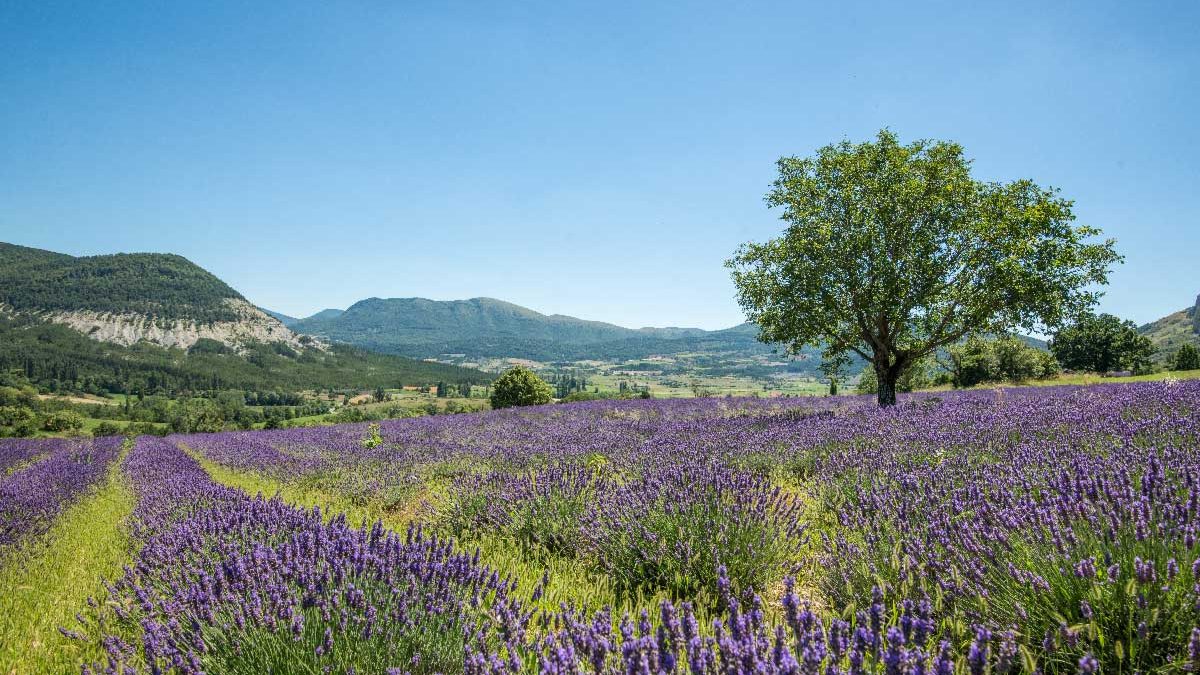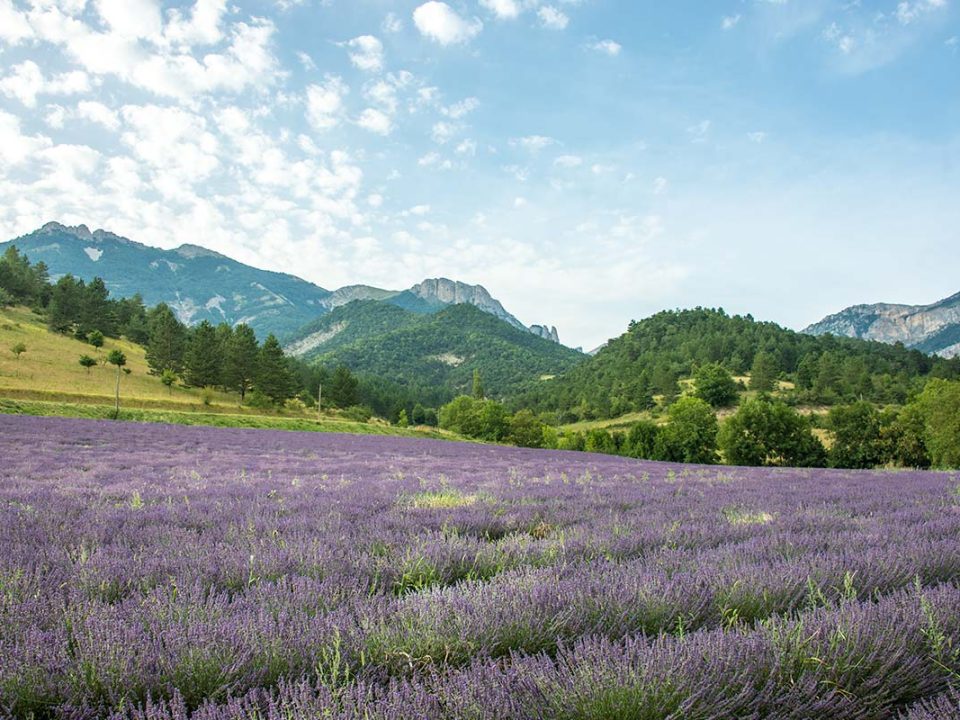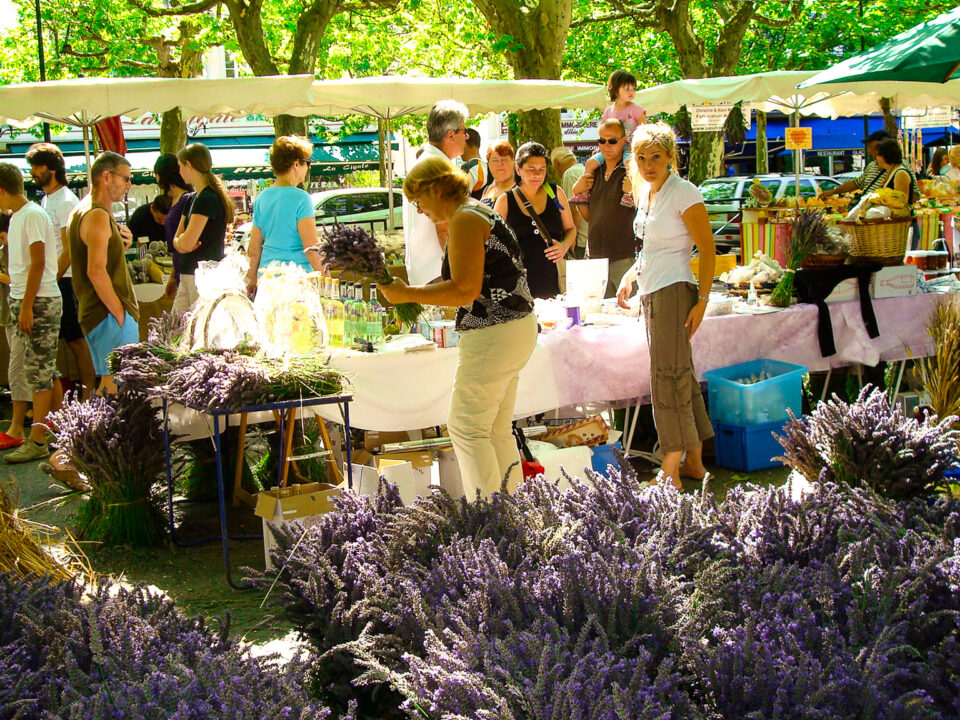The lavender of the heights
Picked or cultivated with difficulty, it is the lavender of the pioneers. And memories for the older ones. It is also the unexpected lavender for the walkers. Fantasized through lavender events, it appears today in the form of “isolated gardens, worked in the heart of a preserved nature”. Sometimes difficult to locate for the visitor, it contributes to the maintenance of a polyculture of mountain. It is often found in perched valleys, with marked reliefs, with a rigorous climate, and on not very fertile grounds.
Examples: the Dignois region, the Haut-Diois, the Verdon, the Grasse region, the Buëch.
The lavender-mosaic
It is the lavender of the mix. It has been deliberately installed so that it can be easily spotted by the visitor from the surrounding ridges and passes. It is an essential element of the combination of traditional cultures of Haute-Provence: olive trees, vines, fruits, aromatic plants. Here, harmony is based on the assembly of diversities. It is sometimes threatened by the consequences of tourist frequentation and urbanization or, conversely, in some cases, agricultural abandonment. It is found on the dry medium mountains and hillsides, where the villages are concentrated in the valleys, close to the main roads.
Examples: the Luberon, the Baronnies.
The lavender site
It is the “lavender of Epinal”. Lavender or lavandin, combined with cereals, it testifies to an agriculture that wants to hold on. Thanks to the specialization and concentration of farms, it occupies a central place in the rural landscape. But these areas are now suffering, depending on the case, from the decline of crops, the recent difficult climatic years or a high tourist and land pressure.
Examples: the country of Grignan, the plateaus of Albion and Valensole.
![[:fr]Logo-Routes-de-la-Lavande[:]](http://routes-lavande.com/wp-content/uploads/2022/02/Logo-Routes-de-la-Lavande.png)



![[:fr]Routes-de-la-Lavande-lavande-des-hauteurs[:]](https://routes-lavande.com/wp-content/uploads/2018/04/Routes-de-la-Lavande-lavande-des-hauteurs-1.jpg)
![[:fr]Routes-de-la-Lavande-lavande-mosaique[:]](https://routes-lavande.com/wp-content/uploads/2018/04/Routes-de-la-Lavande-lavande-mosaique-1.jpg)
![[:fr]Routes-de-la-Lavande-lavande-site[:]](https://routes-lavande.com/wp-content/uploads/2018/04/Routes-de-la-Lavande-lavande-site-1.jpg)

